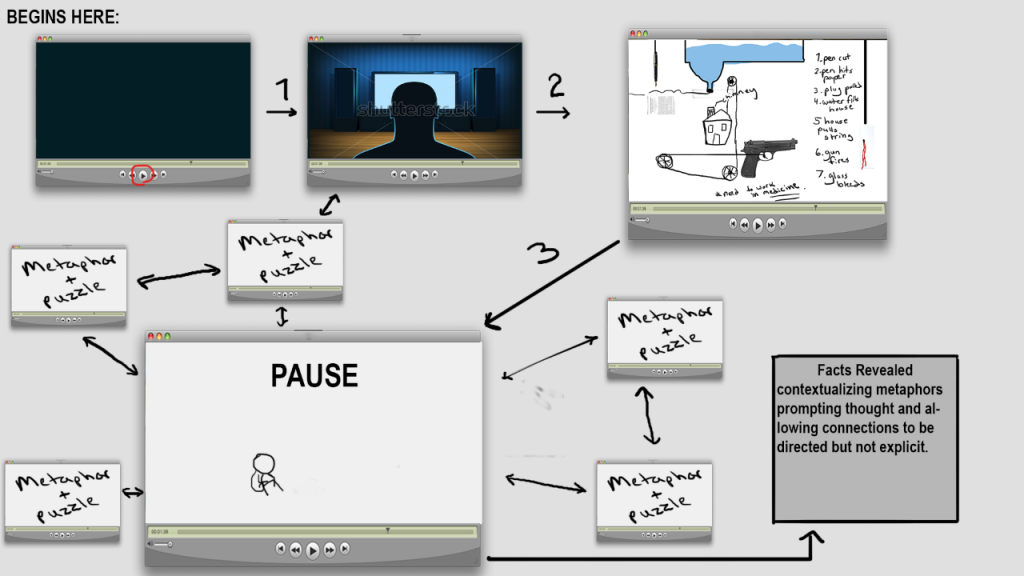The blog posts for week 4 and 5 coming together like this was somewhat by accident, but they actually relate quite well. In week 4, we actually didn’t do much additional research, we were more focused on narrowing down our ideas for Quarters. We figured by having one concrete idea to present instead of 2 or 3, we could get more direct, practical feedback on that one idea, rather than having the faculty simply helping us decide which to pick. We actually were still going back and forth between two ideas — “Black and White Town” and “Pause” — the morning of Quarters presentations. After meeting with our “clivisor” and discussing our leanings on the two ideas, we finally bit the bullet and narrowed it down to one: “Pause”.

Reactions to “Pause” were somewhat mixed. Some faculty absolutely loved it, while others were puzzled, bordering on concerned. They praised the unique and innovative concept, but had a hard time envisioning exactly how the gameplay would work. We got a wide range of very helpful and insightful comments from the faculty. To make sense of it all, we sat down as a team and went through the feedback we got, piece by piece, and decided what we wanted to address and what we felt was less relevant to our project. For example, one suggestion was that we could replace the video player mechanic with a more generic time pause/rewind mechanic. While we felt this was a good suggestion from a gameplay point of view, it took us away from the media criticism angle we’ve been using. On the other hand, several faculty brought up concerns that players might be confused by the controls. We believe this is a very good concern, and is something we will monitor closely in all our playtests.
While we got some good feedback from the Quarters walkarounds, the extended feedback we got from the sitdowns on Friday was even better. We were especially fortunate in that the two faculty assigned to our sitdowns were Chris Klug and Dave Culyba — the two people most excited by and worried about our project, respectively.
Chris loved our plan for using non-linear and non-traditional storytelling. He pointed us to the works of Italo Calvino, and explained how powerful it can be to let the audience assemble the story for themselves. He argued that we shouldn’t go out of our way to explain the meaning of everything at the end, and in fact that could be detrimental as it might make the audience feel stupid for not figuring it out on their own. Leaving it open, he explained, will keep them thinking about it long after the experience has ended.
Dave also gave us excellent feedback, mostly from a mechanics perspective. He discussed strategies for getting people to change their beliefs, and explained how mechanics can be used to achieve that. While he liked the video player interaction as a unique and novel game idea, he didn’t seem entirely sold on how it related to our core message. He explained that, for example, if you were making a game about how the media misinforms people, you might give the player an “unmask” tool, and teach them how to spot and unmask media bias. He suggested we think about what we want the player to learn, and find a mechanic that fits that.
Moving forward, we decided to take another piece of Chris’s advice and begin building. His suggestion was to just start throwing together images and metaphors that we think are impactful and see what works. To that end, we began doing a new wave of research, looking for disaster stories that could make for powerful metaphors. We compiled a list of 40 stories, and began thinking of ways we could represent them in terms of our gameplay and mechanics. We also had a team viewing of the film It’s Such a Beautiful Day, which our designer thought did a good job of telling the sort of metaphorical story we’re working on. Our next steps are to begin designing some metaphors and getting them in front of people.
